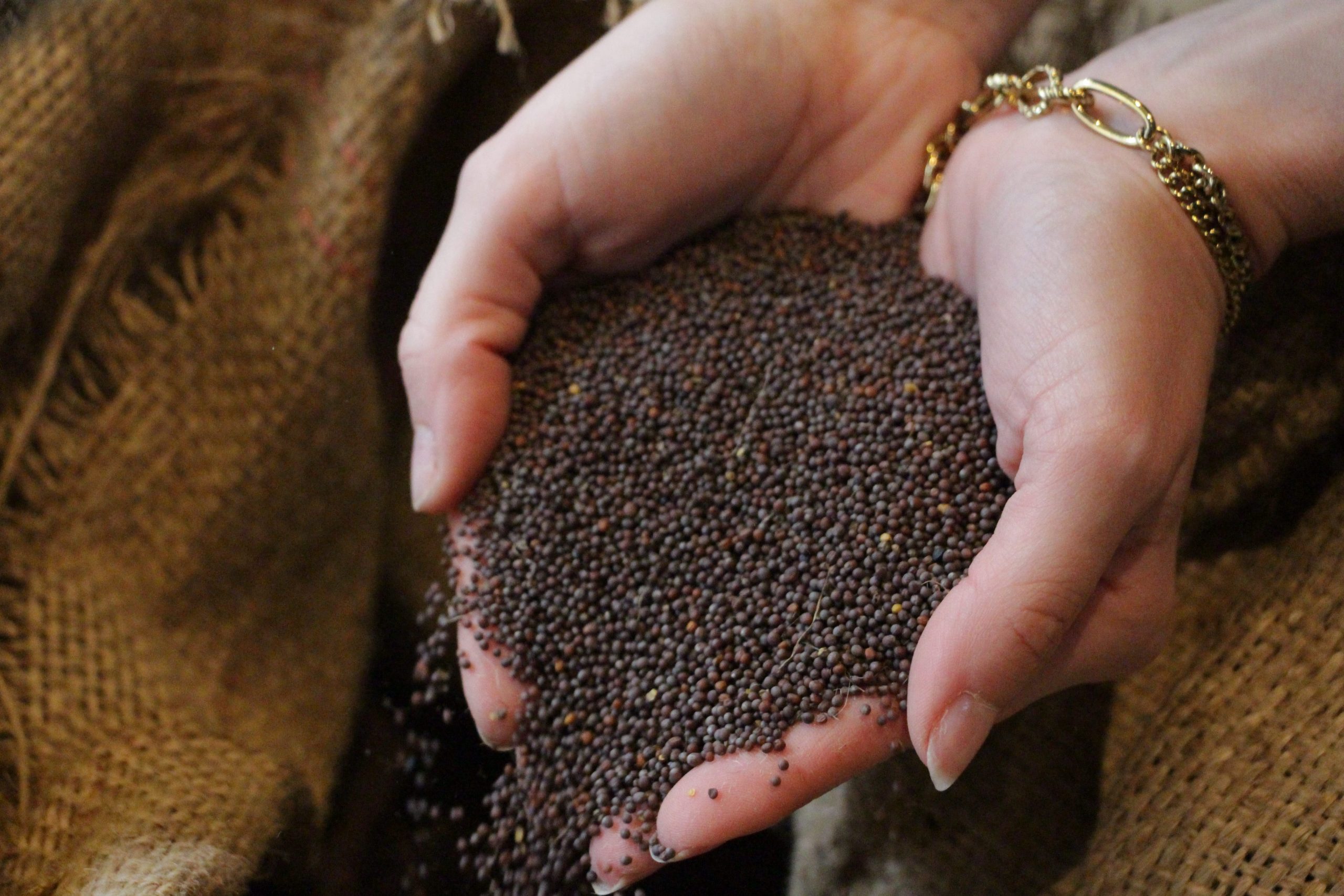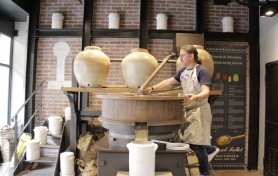Every now and then Atlas Obscura come up with a gem. This is one of them
ON A SUNNY AFTERNOON IN the heart of Dijon, just steps from the lucky stone owl that gives rue de la Chouette its name, the last Dijon mustard maker in the city has been at work for just under an hour. By the time I step into the diminutive shop, Nicolas Charvy has already soaked the tiny mustard seeds in a mixture of water, salt, vinegar, and white wine to make what he terms “our verjuice,” a stand-in for the more traditional juice of the tart Bourdelas grape (a historic variety that once grew throughout Burgundy, but has now been largely abandoned, in part due to the fact that, according to Les Cépages, it makes wine that is “frankly bad”).
In the middle of the afternoon, the Edmond Fallot shop is bustling with activity: Tourists fill their baskets with local specialties such as gingerbread or crème de cassis, but they mainly flock to the mustard, available in a range of varieties. In the heart of the small store, Charvy is hard at work, pouring the soaked mustard seeds into a custom-made stone-grinder, which dominates the space. A thick paste oozes in irregular dollops from the grinder’s spout, plopping into a large ceramic jar placed underneath. As tempting as it looks, Charvy tells me, it’s far from palatable: It will take at least a week of fermenting before the natural spice of the mustard overtakes its bitterness, and it will be ready to enjoy.
Charvy is the latest in a long line of local mustard makers in Dijon, a status first protected here in the 1600s. Following the 2009 closure of the Amora-Maille factory, he also became the last.

If mustard has long been linked to Dijon, it’s mainly thanks to the local availability of mustard seeds, first coplanted with grapevines by ancient Romans and persisting thanks to 17th-century charbonniers, who produced coal in open fields, providing natural fertilizer for cruciferous plants such as mustard. But following World War II, farmers turned instead to the production of botanically similar (and subsidized) colza, and Burgundian mustard seed cultivation fell nearly into extinction.
It was thanks in large part to efforts by Charvy’s business partner, Marc Désarménien, the current owner of the family-run Moutarderie Edmond Fallot, that the trade has been recovered, with about 300 independent farmers cultivating mustard across 6,000 hectares of Burgundian land, mainly in the Côte-d’Or.
Despite being a Dijon native, Charvy did not always intend to be a moutardier. After a first career in IT, he transitioned to work purveying local specialties ranging from wine to gingerbread at the nearby shop B Comme Bourgogne. It wasn’t until 2014 that he teamed up with Guillaume Vieillard and Désarménien to open this boutique—a satellite of the nearly two-centuries-old Moutarderie Edmond Fallot—and restore mustard-making to its rightful place in the heart of the historic city.
Read more at




